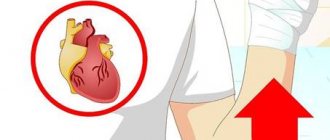When spending leisure time near bodies of water, remember the danger they pose for the unwary swimmer. After all, swimming and diving can bring both pleasant memories and terrible life experiences. Fortunately, if you follow the safety rules on water, the chance of such emergency incidents is extremely small.
Common causes of drowning are hypothermia or overheating, which can cause loss of consciousness and subsequent filling of the lungs with water. Increases the risk of convulsions during hypothermia. The possibility of disorientation of the victim due to alcohol intoxication, which leads to a weakening of the ability to rationally assess his condition, cannot be ruled out. At the moment when the victim loses consciousness, the body does not stop breathing to maintain vitality. Therefore, an unconscious person's automatic attempt to breathe will result in the airways and lungs filling with water. This is fraught with fatal consequences in a situation where first aid for drowning was not provided or it was provided incorrectly.
First aid for drowning - what to do?
The main threat that leads to a tragic outcome is the ingress of fluid into the respiratory tract and lungs. The volume of liquid ingested is directly related to the time a person spent under water.
First aid for drowning will be relevant when you are under water for three minutes.
After passing the five-minute mark, the chances of survival tend to zero.
The main thing to remember before providing first aid for drowning is that you should act carefully, calmly and calmly. It is natural that when a drowning person panics, he is fighting for his life. And it’s a completely different matter when the rescuer panics. An important point that will affect the likelihood of success is the presence of swimming skills. If you have completed basic training at school or university in physical education classes, then these will be quite enough (Figure 1). Be prepared for the fact that a drowning person may accidentally pull you under the water, hugging you tightly, because he is in a state of mortal panic. First aid techniques for drowning will vary depending on the amount of water in the lungs.
Figure 1. When rescuing a drowning person, be careful: the drowning person can drag you to the bottom too
There are various types of drowning, first aid for which will require special skill, and the primary ones are:
- First aid for drowning in water will be most effective if during its implementation the chance of salvation is objectively high. For an unqualified rescuer, it will only work if a person floundering in the water was noticed immediately. Help him stabilize on the water, take a breath, cough up water and come to his senses. In situations where the victim’s lungs are filled with water, a forced march awaits you with the body at the ready. Swim up from behind and grab him by the armpits or, in extreme cases, by the hair. Turn the drowning person onto his back and swim to the shore, avoiding attempts to grab you;
- First aid for someone drowned on land is a life-saving straw for someone who was in the water for more than three minutes and was quickly brought to shore in an unconscious state. In this scenario, it is necessary to begin providing first aid for drowning as quickly as possible. It will consist of a procedure to restore the pulse, expel water from the lungs and restore spontaneous breathing.
What water safety rules should you follow?
- Sign your kids up for swimming lessons
- Don't let your children go into deep water until they learn to swim
- Never let your child swim alone
- Swim only in areas/pools where there are lifeguards
- Wear certified flotation devices such as life jackets and arm guards
Don't read too much about the symptoms of delayed drowning because it is still quite rare. But keep a close eye on your children after they've finished playing in the water, and look out for any strange or unusual behavior your child exhibits after bathing. Never be afraid to contact your pediatrician or your insurance company (on vacation), who will tell you the steps you need to take.
Primary or “wet” drowning
When, with the last of his strength, a person grasping at the opportunity to escape flounders in panic and tries to stay on the surface, he swallows huge volumes of liquid. By filling the space inside the alveoli, water does not allow oxygen to penetrate into the blood, thus disrupting the natural oxygen cycle in the body. This causes a state of oxygen deprivation called hypoxia, which can cause the skin to turn blue. Also noticeable signs will be swollen veins in the neck and pink foam from the throat.
Figure 2. After you have pulled the drowning person out of the water, clean his mouth from algae and other dirt, and then proceed to remove fluid from the stomach and respiratory tract
To avoid death, you need to know how to provide first aid to a drowning person (Figure 2):
- Spending extra time checking your pulse can play a cruel joke, so it’s better to skip this moment;
- Begin the procedure of cleansing the stomach of excess fluid;
- Throw the adult belly down over a thigh or bench, then press firmly onto the back. A small child can be turned upside down and shaken;
- Clean the oral cavity from sand and algae;
- Next, trigger the gag reflex by sticking two fingers deep into the throat and pressing on the tongue;
- If vomiting occurs, you can relax, because this indicates the presence of a pulse;
- If the gag reflex does not follow, you need to start the procedure of chest compressions;
- When the moment has come to remove water from the lungs, grab the person by the armpits from behind and begin to squeeze the sides of the chest. At the same time, insert two fingers into the drowned man’s throat;
- As soon as the victim stops coughing up liquid, turn him on his side and cover him with something warm: a blanket, a towel, outerwear.
Tests and diagnostics
To register death as a result of drowning, it is necessary to identify a number of signs during a sectional study, as well as determine the type of drowning.
In the case of a true “blue”, “wet” type of drowning, most often in the conditions of natural bodies of water or simulating them, the victims are found to have persistent whitish fine bubble foam at the openings of the mouth and in the nose area, acutely swollen lungs, hemorrhages under the cord of the pulmonary pleura, as well as diatom plankton in the tissues of internal organs and bone marrow.
If asphyxial “pale”, “dry” drowning occurs, then the distinctive signs of acute external respiration disorder become, which contribute to the appearance of hemorrhages in the conjunctiva, to the formation of diffuse, saturated cadaveric bluish-violet spots that affect the face and neck, puffy in appearance, swelling of the lungs sharply expressed, has significant volumes and airiness.
The reflex type of drowning is characterized by signs of a rapid death with the formation of pronounced diffuse, saturated cadaveric bluish-violet spots, with a liquid state of blood inside the heart and great vessels against the background of the absence of signs of other types of drowning.
A diagnostic tetrad was also proposed, which is determined by the detection of fluid in the sinuses of the main bone, acute pulmonary emphysema , air embolism of the left heart, and the “reflux” of red blood cells into the thoracic lymphatic canal.
Signs of a dead person's body being in the water
For forensics, data on both death, perhaps sudden death as a result of a serious illness, and how long the body was in the water are very important. Characteristic features include:
- pale skin, possibly “goose bumps”, wrinkling may be pronounced on the skin of the scrotum and nipple areas;
- varying degrees of maceration of the skin, which depends on the duration of contact with water, its temperature, the age of the victim, etc.;
- the final sign of maceration is the spontaneous separation of the epidermal tissues of the plantar surfaces, hands, sometimes with nails, which is called the “gloves of death” and complicates the process of identifying the body;
- if putrefactive changes in tissues begin, hair separation may occur;
- evidence of the body being in water is found sand, silt, algae, wet objects, clothing and the surface of the body.
Asphyxial or “dry”
Pale skin and fine pink foam from the lungs are indicators of dry drowning. The reasons preceding this are severe relaxation of the nervous system in a state of alcoholic intoxication, or any other disturbances in the functioning of the central nervous system. “Dry” is a fairly common type, caused by an involuntary spasm of the glottis due to liquid entering it, causing irritation.
Figure 3. Scheme of manifestation of laryngospasm during “dry” drowning
By closing the entrance to the lungs, laryngospasm leads to suffocation due to oxygen deficiency (Figure 3). However, the liquid does not penetrate the lungs until the person loses consciousness and the relaxation phase sets in, making rescue many times easier. Therefore, you can skip the phase of squeezing fluid out of the lungs and immediately move on to more necessary procedures.
The first aid that should be provided to a drowned person will be very simple, but requires preliminary training or experience:
- Lay the victim stomach up on a hard surface. For example, on a hard wooden bed or concrete slabs;
- Begin the resuscitation procedure;
- Without bending your elbows, place your hands on the victim’s chest;
- Push with your entire body every half second;
- Tilt the victim's head back until an obtuse angle is formed between the chin and neck;
- Alternate compressions with artificial ventilation using the mouth-to-mouth principle (Figure 4);
- Pinch the patient's nose and take a sharp breath;
- Exhale sharply into his mouth and open his nose;
- Carry out the procedure at intervals of 4-5 seconds. The recommended frequency is 2 exhalations per 30 compressions;
- When a pulse appears and spontaneous breathing appears, you can calm down and provide further assistance: help the victim get to the nearest warm room for further warming with tea and a warm blanket.
Figure 4. First aid steps for dry drowning
Causes
There are a number of reasons why a person drowns:
- violent , suicide or when a person is deliberately harmed to health, including this type of execution as catapontism ;
- traumatic - concussion, spinal injury, as well as jumping from a height and sudden impacts, especially with the abdominal area on the surface of the water, which can cause reflex traumatic shock , “over-irritation” of peritoneal nerve endings and circulatory disorders;
- by negligence - when rules such as “do not swim beyond the buoys”, “do not swim in untested bodies of water” are not followed, in stormy weather, while intoxicated or in another state of altered consciousness, during winter fishing on thin or unreliable ice, in the event wandering or crossing dangerous swampy and quicksand areas, due to errors in instructions and equipment among diving enthusiasts.
Attention! Even simple diving can be dangerous, as it can cause labyrinthine crisis and sudden dizziness , loss of spatial orientation , panic or short-term loss of consciousness . Moreover, you need to remember that a sharp dive to depth can cause rupture of the spleen, liver and other internal organs.
Syncopal drowning
This type of drowning occurs due to reflex cardiac arrest, provoked by temperature shock caused by entering ice water from a hot environment. Intense physical activity, such as running, which heats up the body, will also be risk factors. Intoxication and overeating will also not be beneficial and will only increase the risk of drowning.
Figure 5. If you pulled a drowning person out of cold water, the chances of saving him are higher than saving him in the warm season
Visually, the victim will stop all actions and begin to drown due to the shutdown of all higher nervous activity and the absence of any motor skills. Therefore, it is necessary to dive for the drowning person as quickly as possible and try to pull him to shore.
First aid for drowning will consist of resuscitation procedures for artificial ventilation and chest compressions (Figure 5).
If this happened in icy water, then the chances of survival will increase. Due to the slowdown of all biological processes in a cold environment, including oxygen metabolism, this will allow the drowned person to be restored to their condition even after 10 minutes.
General information
Drowning is a fatal, terminal, life-threatening or pathological condition in living organisms that have been immersed in water or a liquid of another composition or nature, including a granular mass. In this case, a disruption of the functioning of vital systems occurs as a result of asphyxia - suffocation , which causes oxygen starvation and excess carbon dioxide in tissues and organs when the lungs are filled with fluid or the lumen of the airways is closed (obturation).
Drowning is a fairly common cause of death on water (approximately 400 thousand per year or 7% of all injuries according to world statistics), especially among young people, so knowledge of the features of its pathogenesis and first aid are relevant aspects and a real problem public health today.
Secondary drowning
Quite a dangerous phenomenon due to its non-obviousness. It usually occurs after the primary one and carries a hidden threat that can only be detected by careful observation. The mechanism by which this phenomenon occurs is quite simple. After removing water from the lungs, some fluid may remain inside in the form of droplets, which will interfere with the proper functioning of the respiratory system. This will lead to a depletion of oxygen in the body and a subsequent lack of oxygen in the brain. In adults, this problem is solved by the body itself, but for children it poses an increased danger, since the area of their lungs is relatively smaller and any violation will lead to prolonged oxygen starvation. The secondary type of drowning can be detected over a time period from an hour to a day.
Figure 6. If these symptoms appear after drowning, call an ambulance immediately
Symptoms to look out for (Figure 6):
- Difficulty breathing;
- Prolonged cough that does not go away for several hours;
- Pain in the chest cavity;
- A slight temperature deviation from the norm;
- Sudden crippling fatigue accompanied by drowsiness;
- Impaired thinking abilities and odd behavior;
- Nausea and heaviness in the stomach.
When faced with these symptoms, it is necessary to call an ambulance, but it may not always arrive on time (Figure 7).
Figure 7. When calling an ambulance, do not rely only on its quick arrival, provide all possible CORRECT first aid
When you are pressed for time, do the following:
- Sit down and ask your child to lie on your back, feet up;
- Grab your hips with your hands and secure them on your shoulders;
- Then stand up straight and ask the child to cough while shaking him.
Pathogenesis
Aspiration of large quantities of water causes subsequent disturbances in gas exchange at the level of the alveoli while maintaining the anatomical integrity of the external respiration structures. In terminal conditions, the development of alveolar emphysema or so-called acute water emphysema - hyperhydroaeria .
The pathogenesis of “wet” drowning is based on quantitative and qualitative changes in the blood - liquefaction (drowning in fresh rivers, reservoirs, lakes, etc.) or, on the contrary, thickening (in seas and other bodies of salt water). As a result of a chain of pathological changes, when water gets into the lungs, damage to the central nervous, cardiovascular and digestive systems occurs, not to mention damage to the lung tissue itself. Altered blood composition (concentrations of potassium, sodium, calcium, chlorine, etc.) and the destruction of red blood cells containing hemoglobin are accompanied by its oxidation to hydrochloric acid hematin, which has a toxic effect on the renal tubules.
It is important to know! The lethal dose for drowning a person is the ingestion of less than 22 ml (on average 10 ml) of water into the lungs, per 1 kg of body weight. However, the cause of death of a person on water may not be drowning so much as injury, exacerbation or critical condition caused by another disease, for example, myocardial infarction , epileptic seizure , muscle cramps or cerebral hemorrhages. This is qualified as death in water; the ingress of fluid becomes a secondary passive complication against the background of a terminal condition.
The most important factors influencing the pathological mechanisms in the body of a drowning person are: the composition of water (salt, fresh, chlorinated, with impurities - silt, sand, algae, chemical pollution, etc.), its temperature, duration of immersion and individual characteristics of the body ( state of health, age, fatigue, alcohol intoxication, etc.).
First aid for drowning: algorithm of actions
When faced with an emergency on the water, it is necessary to follow a certain algorithm that will help save lives.
First aid for drowning briefly point by point in chronological order:
- Ask someone to call an ambulance;
- Pull the body out of the water onto the shore;
- Don't waste time checking your pulse;
- Immediately begin resuscitation procedures;
- Follow the instructions for each scenario;
- Help the victim come to his senses;
- Wait for paramedics to arrive.
By following the above algorithms and remaining calm, you will be able to determine what type of drowning you are faced with, after which you can easily provide first aid that will save someone else’s life.










